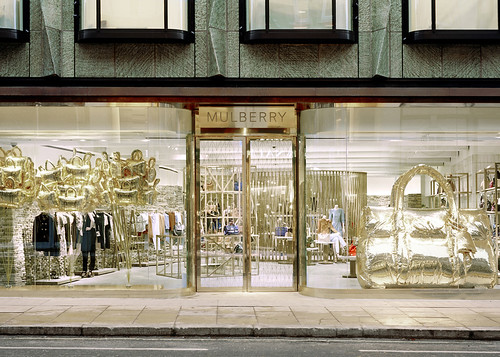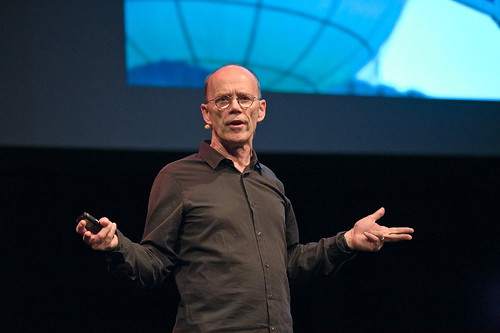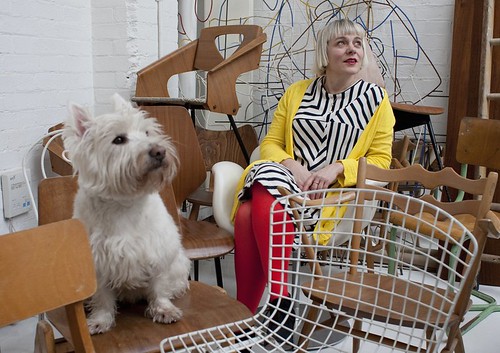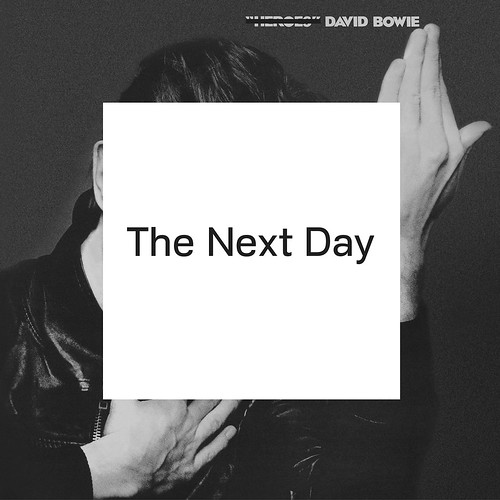Friday, 3:10pm
26 April 2013
Point this way
Construct’s Georgia Fendley explains why Point will be ‘much more than a conference’
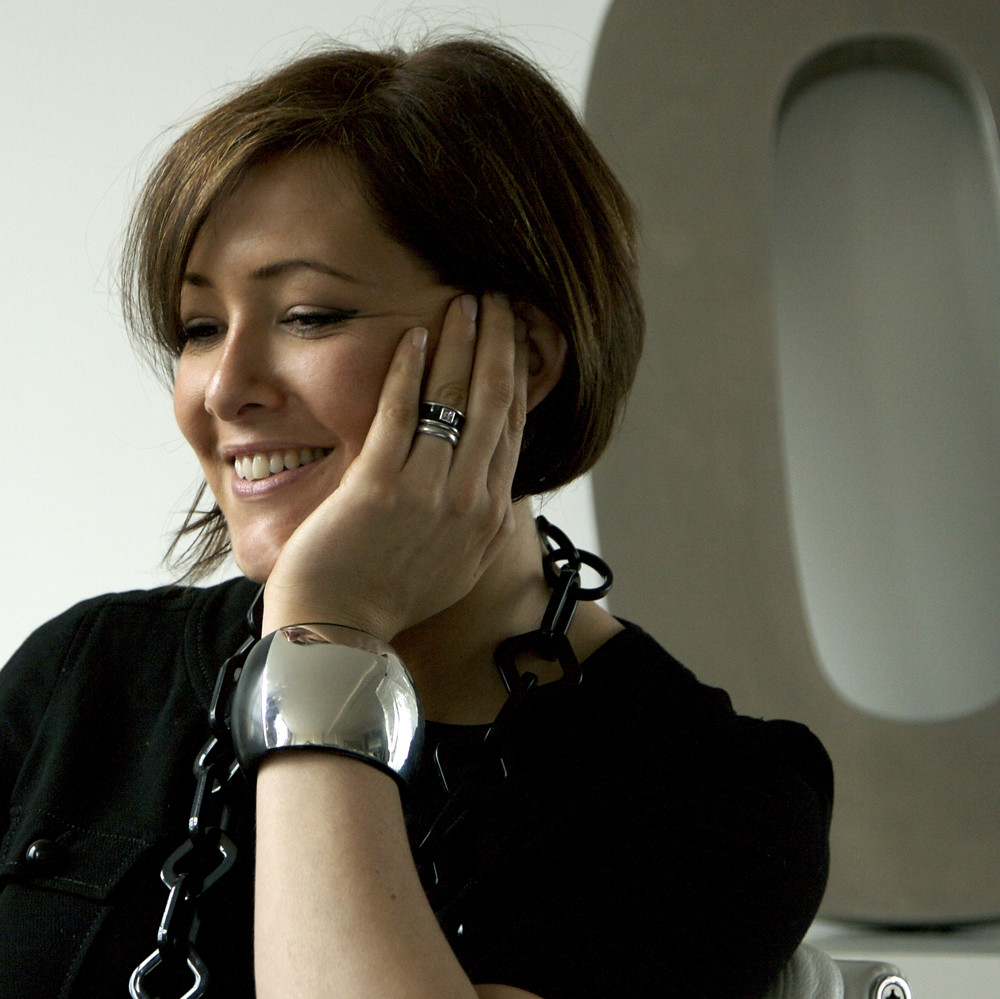
The sounds of ripping packing tape smacking cardboard resounded throughout the Construct design boutique in East London on a chilly April morning, writes Jane Morice.
Construct founder Georgia Fendley, former Brand Director at Mulberry, was not solely focused on Construct’s move to their new workspace in the coming days. Among the various projects the Construct team spends their time working on (clients include Mulberry and Claridge’s), the first-ever Point conference, co-founded by Fendley, is rapidly approaching. Fendley spoke with Eye about Point — its purpose, the May conference, and its future.
Window display for Mulberry’s 40th anniversary campaign designed by Construct.
Top: Georgia Fendley.
After five years at Mulberry, Fendley wanted to help found an organisation ‘to champion the idea of design, socially as well as in business and education.’ Therefore, alongside her husband Tim – a wayfinding / information designer and founder of Applied – and Robin Richmond (former director of Typo London and Eye contributor), Matt Judge (Creative Director at 8 inc, London), and Patrick Baglee (writer-at-large and New York editor), Fendley created Point.
‘We [designers] have the potential to create value but we aren’t valued enough as an industry because we are so segmented. The idea of Point is that it doesn’t compete with any of the organisations — it glues them together, it magnifies them’, she said. Point’s inauguration will be held Royal Institute for British Architects (RIBA), 2 > 3 May 2013. Speakers for the conference continue to be announced, yet some of the most notable names include Erik Spiekermann, acclaimed photographer Bruce Gilden, and design team Edward Barber and Jay Osgerby, who designed the 2012 London Olympic torch. The conference theme is ‘authenticity’, a topic Fendley thinks has become ‘a throwaway term’, but still has much value in discussing.
A notable Point conference speaker, Erik Spiekermann.
‘We’re all talking about authenticity, but I meet so few businesses that are actually being authentic’, Fendley said. Fendley and the other chairs of Point chose speakers and moderators for the conference based upon their dedication to authenticity in the way they conduct their business.
‘The way we behave has a massive influence; we’re the people who persuade others to buy stuff, do stuff. Therefore, if we take responsibility for that, it’s quite powerful’, she said. Additionally, Fendley hopes that the Point conference, plus its future projects, will be an experience where designers can openly collaborate.
‘When I look at the speakers, it’s interesting how many of them are blurring boundaries and sharing – sharing resources that exist or using something to benefit more than one end user or client’, Fendley said. Furthermore, as a part of Point’s charter, they believe ‘it’s good to share’ and plan on making all their content available free-of-charge.
Movement Cafe, Morag Myerscough. Photo credit: Gareth Gardner.
Georgia Fendley wants to make the conference as accommodating as possible for the speakers, presenters, and attendees. RIBA has two spaces Point will utilise – a 400 seat auditorium for the main stage and the Wren Room, a space on the top floor that will house debates and workshops. The Wren Room will also be the location for talks by younger designers and initiatives such as Code Club (founder Clare Sutliffe will be speaking) and Open Studio Club, a free listings site for designers looking for affordable workspace, who may have been ‘intimidated’ by the main stage.
‘The idea of Point is that we accept content of all sorts. So we can come to your workshop and make a film with you. We can create a small stage for you. And it shouldn’t be that the most important things only happen on the main stage’, Fendley said.
The cover art for David Bowie’s 2013 album The Next Day, designed by Point speaker Jonathan Barnbrook.
Point’s highly anticipated inaugural conference is just the starting point for exciting things ahead for the organisation. Within the coming months, Point is planning on holding two other one-day events on the topics ‘Cities’ and ‘Design and Music’, although the dates, times, and locations for these events are yet to be confirmed. Apart from events, Point has been actively working on ‘capturing amazing, rich content that somebody should be capturing but nobody is’, according to Fendley. In the early months of 2013, Fendley and some Point facilitators were in New York filming with Milton Glaser – most notable for his ‘I ♥ NY’ design – in his studio, as well as with legendary photographer Bruce Gilden on the subway to Coney Island. These films, and several others, will be shown at the May conference.
‘We’re hoping that delegates get a mixture of exciting, inspiring, beautiful, stimulating presentations and really thoughtful debate, and also sort of joining the dots between things’, she said. Above all, though, Fendley hopes the delegates of the conference will be exposed to designers, organisations, and ideas that bring new perspective to their work.
Dylan poster by Milton Glaser.
Eye is the world’s most beautiful and collectable graphic design journal, published quarterly for professional designers, students and anyone interested in critical, informed writing about graphic design and visual culture. It is available from all good design bookshops and online at the Eye shop, where you can buy subscriptions, back issues and single copies of the latest issue. You can see what Eye 84 looks like at Eye before You Buy on Vimeo.

